A Yeshua’s Cat Glossary F-J
This is the 2nd blog entry dedicated to clarifying lesser-known words and ideas from Yeshua’s Cat. This installment looks at words beginning with F-J. Scroll down to see the first glossary, with words A-D. As before, the numbers in parentheses indicate the page in the paperback edition where the word first appears. Let me know if I’ve overlooked anything!
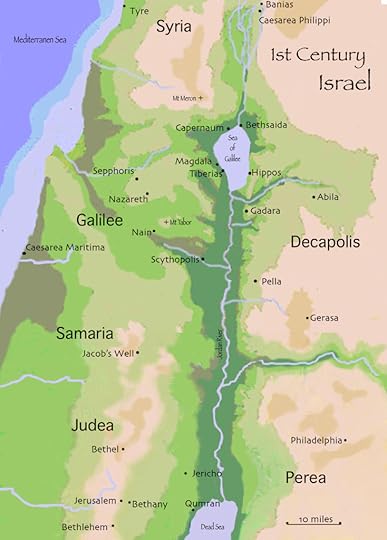
1st C Israel, map by C. L. Francisco
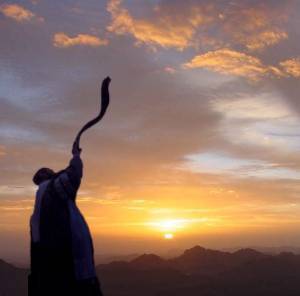 * Feast of the Blowing of Trumpets (p. 62) The “feast of the blowing of trumpets,” or “the day of blowing the horn,” is one of the major feasts of Israel’s holy year, better known today as Rosh Hashanah, or “beginning of the year.” Originally it was begun with the blowing of rams’ horns in the Temple to call the people to contemplate their sins and repent before the 10 “days of awe” were completed on Yom Kippur, and God’s verdict was sealed.
* Feast of the Blowing of Trumpets (p. 62) The “feast of the blowing of trumpets,” or “the day of blowing the horn,” is one of the major feasts of Israel’s holy year, better known today as Rosh Hashanah, or “beginning of the year.” Originally it was begun with the blowing of rams’ horns in the Temple to call the people to contemplate their sins and repent before the 10 “days of awe” were completed on Yom Kippur, and God’s verdict was sealed.
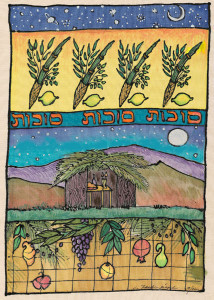
Art by Pomegranate Studios
* Festival of Booths, or Sukkot (p. 81) Sukkot was originally one of 3 great Jerusalem pilgrimage festivals. It had its roots in Israel’s celebration of the harvest, and took place at the beginning of the rainy season. Above all, the week was a time of rejoicing, and of remembering God’s care for Israel during the years of her wandering in the wilderness and living in tents, or booths. Before the first and holiest day of Sukkot, which came five days after Yom Kippur, each family built a small booth, where they lived together during the festival. Sacrifices of animals and grain continued throughout the week. The Illumination of the Temple reminded the people of the pillar of fire that had guided them in the wilderness, and the Pouring of the Water was both prayer and thanks for the coming of the rains. Sukkot also celebrated the beginning of the New Year, when the past year’s mistakes had been wiped away, and all the world was made new.
 * Festival of Lights (p. 123) “Festival of Lights” is another name given to Hanukkah (the Hebrew word for “consecration,” or “dedication”) by the ancient Jewish historian Josephus. Hanukkah celebrated the reconsecration of the Temple in Jerusalem during the Maccabean revolt against the Seleucid empire, when the Temple was cleansed of the pagan desecrations of Antiochus Epiphanes. The Festival of Lights celebrates the eight days during which a single day’s worth of consecrated oil burned on the outer altar for a full eight days, the time necessary to prepare a new quantity of consecrated olive oil. Above all, Hanukkah is a time of joy and celebration, of feasting and praising God.
* Festival of Lights (p. 123) “Festival of Lights” is another name given to Hanukkah (the Hebrew word for “consecration,” or “dedication”) by the ancient Jewish historian Josephus. Hanukkah celebrated the reconsecration of the Temple in Jerusalem during the Maccabean revolt against the Seleucid empire, when the Temple was cleansed of the pagan desecrations of Antiochus Epiphanes. The Festival of Lights celebrates the eight days during which a single day’s worth of consecrated oil burned on the outer altar for a full eight days, the time necessary to prepare a new quantity of consecrated olive oil. Above all, Hanukkah is a time of joy and celebration, of feasting and praising God.
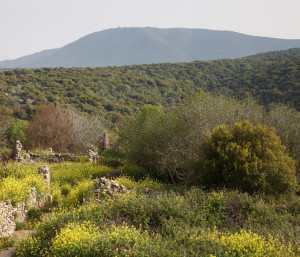 * Galilee (p. 17) Galilee comprises the northern interior of Israel on the west side of the Jordan River. In the time of Jesus it was a primarily rural area beginning in the mountains north of Samaria overlooking the Plain of Megiddo and reaching into the northern mountains toward the borders of Syria. The Mediterranean coast was not considered to be part of Galilee.
* Galilee (p. 17) Galilee comprises the northern interior of Israel on the west side of the Jordan River. In the time of Jesus it was a primarily rural area beginning in the mountains north of Samaria overlooking the Plain of Megiddo and reaching into the northern mountains toward the borders of Syria. The Mediterranean coast was not considered to be part of Galilee.
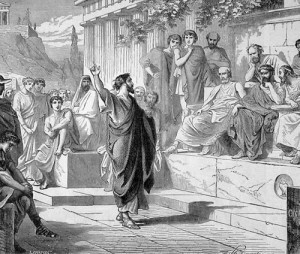
Paul’s sermon to the Gentiles
* Gentile (p. 158) “Gentile” is derived from the Latin word gentilis, meaning “clan” or “tribe”. It has been used since some of the earliest translations of Hebrew and Greek scriptures to translate the Hebrew word goyim and the Greek word ethnos (both literally, “peoples,” “nations”) when the intent was specifically non-Jewish people or nations. Today the word is used almost exclusively in this way. The word “gentile” itself did not originally have this sense, just as the words goyim and ethnos are also more broad.
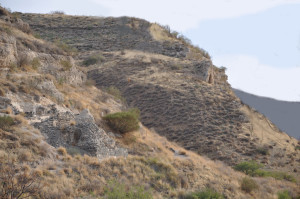 * Gergesenes (p. 112) One of several names referring to the people on the eastern shore of the Sea of Galilee where Jesus cured the demoniac who lived among the tombs, resulting in a herd of pigs drowning themselves in the lake. No one is quite sure where this event took place. The country of the Gadarenes (from Gadara), the Gerasenes (from Gerasa) and Gergesenes (from Gergasa) are all possibilities, and each occurs in some early documents. All are located east of the Jordan, although the best-known cities with the names Gadara and Gerasa are not on the shores of the Sea of Galilee, but further south and east. Their influence in surrounding areas may have been extensive, however, resulting in the use of their names for people living on the eastern shore of Sea of Galilee.
* Gergesenes (p. 112) One of several names referring to the people on the eastern shore of the Sea of Galilee where Jesus cured the demoniac who lived among the tombs, resulting in a herd of pigs drowning themselves in the lake. No one is quite sure where this event took place. The country of the Gadarenes (from Gadara), the Gerasenes (from Gerasa) and Gergesenes (from Gergasa) are all possibilities, and each occurs in some early documents. All are located east of the Jordan, although the best-known cities with the names Gadara and Gerasa are not on the shores of the Sea of Galilee, but further south and east. Their influence in surrounding areas may have been extensive, however, resulting in the use of their names for people living on the eastern shore of Sea of Galilee.
* God’s anointed (p. 8) See “chosen”
* harlot of the Amorite abyss (p. 9) See also “Amorite.” The “harlot of the Amorite abyss” refers to a goddess common to many Ancient Near Eastern cultures, who became characterized over time as abyss or chaos (see the origin of the Hebrew word tehom). The ancient Sumerian goddess Tiamat, “mother of all life,” was associated with salt water, and is probably the best known example of these goddesses. The ancient city of Mari, for which Yeshua named the cat (“lady of beauty and wrath, mother of life”), was named for the sea (mari/mare/mar), the origin of all life. Since ancient Jews considered pagan goddesses to be characterized above all by forbidden fertility rites, the evil spirit speaking to Yeshua called Mari a cat named after the “harlot of the Amorite abyss.”
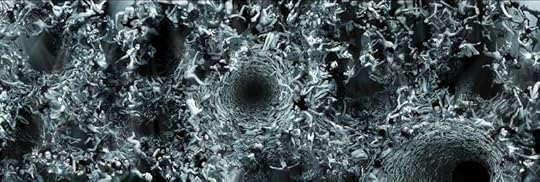
“Tehom,” contemporary artist Angelo Musco’s interpretation of the primeval abyss
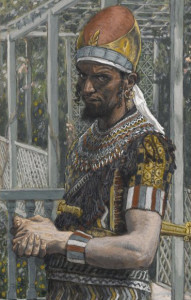
Herod Antipas, by James Tissot
* Herod Antipas (p. 19) There were two principal rulers named “Herod” in Jesus’ life. The first one mentioned in Yeshua’s Cat was Herod Antipas (born before 20 BCE and died sometime after 39 CE). Herod Antipas was Herod the Great’s youngest son, and tetrarch of Galilee and Perea after his father’s death. Jesus called him the “fox.” He is best known today as the New Testament Herod who killed John the Baptist and presided over part of Jesus’ trial. Antipas’ marriage to his sister-in-law and niece Herodias (incest according to Jewish law) resulted in John’s vocal condemnations of Antipas’ behavior. Antipas arrested John and eventually had him beheaded as a favor to his step-daughter after she pleased him with a dance. Like his father, Antipas was an ambitious builder. He rebuilt the Galilean capital of Sepphoris after its destruction in a Galilean uprising, and later built the city of Tiberius on the western shore of the Sea of Galilee as his new capital.
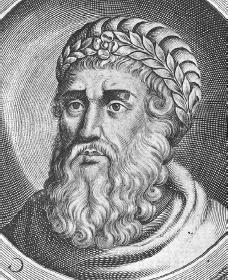 * Herod the Great – (p. 30) Herod the Great was the ruler of Judea under the Romans from 37/36 BCE until his death, probably in 4 BCE. He was the son of an Idumaean father and a Nabataean mother, who converted to Judaism under the Maccabees; because he was not born a Jew–and because of his cruel and immoral excesses–his commitment to the Jewish faith was often questioned. He was king when Jesus was born, and was responsible for the slaughter of the innocents at Bethlehem. It was after his death that Joseph was told in a dream that Jesus could return safely from Egypt. Herod was responsible for a major expansion of the 2nd Temple in Jerusalem and for many other ambitious building projects. Scholars throughout history have questioned his sanity. His sons were also called Herod, which can cause confusion: ie, Herod Antipas, Herod Archelaus, Herod Phillip, etc.
* Herod the Great – (p. 30) Herod the Great was the ruler of Judea under the Romans from 37/36 BCE until his death, probably in 4 BCE. He was the son of an Idumaean father and a Nabataean mother, who converted to Judaism under the Maccabees; because he was not born a Jew–and because of his cruel and immoral excesses–his commitment to the Jewish faith was often questioned. He was king when Jesus was born, and was responsible for the slaughter of the innocents at Bethlehem. It was after his death that Joseph was told in a dream that Jesus could return safely from Egypt. Herod was responsible for a major expansion of the 2nd Temple in Jerusalem and for many other ambitious building projects. Scholars throughout history have questioned his sanity. His sons were also called Herod, which can cause confusion: ie, Herod Antipas, Herod Archelaus, Herod Phillip, etc.
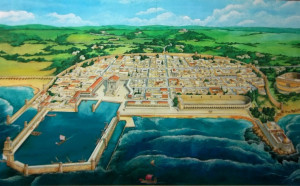
Photo rallimuseums.com
* Herod’s breakwaters (p. 30) This is a reference to one of Herod the Great’s most ambitious building projects: the construction of an artificial harbor at Caesarea Maritima on the Mediterranean coast between the years 25-10 BCE. Craftsmen and masons were drawn from many areas during its construction. Keturah’s husband died in an accident there.
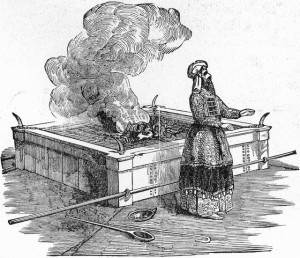 * holocaust (p. 8) “Holocaust” is a word derived from the Greek holocaustos, which described a sacrifice entirely consumed by fire. It was used in the Septuagint as a translation of the Hebrew word olah, or “burnt offering.” It refers to the sacrifice of a whole animal, flayed and burnt on an altar. The skin was removed before burning.
* holocaust (p. 8) “Holocaust” is a word derived from the Greek holocaustos, which described a sacrifice entirely consumed by fire. It was used in the Septuagint as a translation of the Hebrew word olah, or “burnt offering.” It refers to the sacrifice of a whole animal, flayed and burnt on an altar. The skin was removed before burning.
* holy one of God (p. 42) See “chosen.”
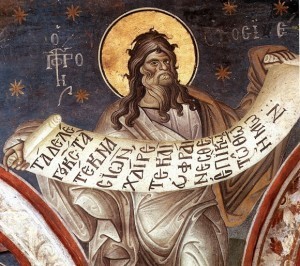 * Hosea (p. 89) A prophet in 8th C BCE Israel, best known for his marriage to the prostitute, and later unfaithful wife, Gomer, as a symbolic expression of God’s steadfast commitment to Israel in spite of her faithless following after other gods. Hosea’s prophecies are full of warnings of doom, but also of promised forgiveness.
* Hosea (p. 89) A prophet in 8th C BCE Israel, best known for his marriage to the prostitute, and later unfaithful wife, Gomer, as a symbolic expression of God’s steadfast commitment to Israel in spite of her faithless following after other gods. Hosea’s prophecies are full of warnings of doom, but also of promised forgiveness.
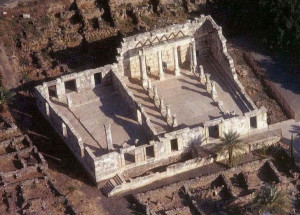
Wadi Qelt Synagogue, 1st C BCE, Jericho
* house of prayer (p. 41) “House of prayer” is the term used in Yeshua’s Cat instead of synagogue, from the Greek synagoge, which was not in common use in Jesus’ time. In the 1st C CE the Hebrew term was bet-k’neset, “house of gathering.” The Greek word was proseukhē, “house of prayer.”
* House of the Poor (p. 87) See “Bethany.”
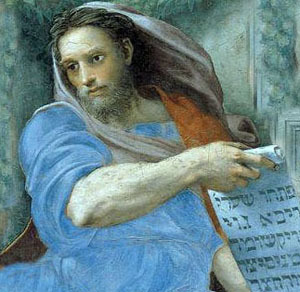
Raphael’s Prophet Isaiah
* Isaiah (p. 89) The prophet Isaiah lived in Israel during the 8th C BCE, and his prophecies have much to do with Israel’s enemies the Assyrians, and their eventual defeat by Israel. Most scholars believe that there are at least two major contributors to the book of Isaiah, the second almost 200 years after the original prophet lived. It is this second Isaiah who wrote many of the best-known prophecies of the coming messiah, such as “the suffering servant” passages. Yeshua is referring to a passage by the earlier prophet here, in which Isaiah described the hoped-for paradisal age of the messiah.
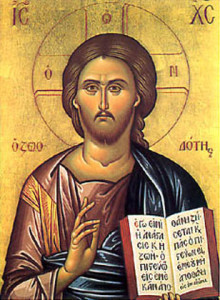 * James, Yeshua’s brother (p. 19) Because of the doctrine of Mary’s perpetual virginity, the Roman Catholic Church does not accept the possibility of Jesus’ having had any brothers or sisters, in spite of apparent references to to them in the Gospels. James is mentioned as Jesus’ brother both in the scriptures and by several early historians. He is commonly called James the Just, and was the leader of the Church at Jerusalem.
* James, Yeshua’s brother (p. 19) Because of the doctrine of Mary’s perpetual virginity, the Roman Catholic Church does not accept the possibility of Jesus’ having had any brothers or sisters, in spite of apparent references to to them in the Gospels. James is mentioned as Jesus’ brother both in the scriptures and by several early historians. He is commonly called James the Just, and was the leader of the Church at Jerusalem.
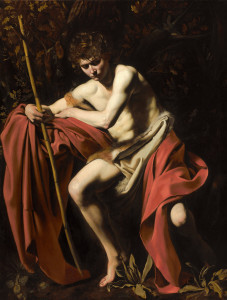
Caravaggio’s John the Baptist
* John, Yeshua’s cousin (p. 14) This is John the Baptist, who was preaching repentance and baptism for the forgiveness of sins before Jesus began his public ministry. He appears in the gospels as the one who came to prepare the way for Jesus. The Gospel of Luke is the only book that suggests a family connection between Jesus and John, and many scholars doubt its accuracy. John is best-known for baptizing Jesus and for the manner of his own death. Imprisoned by Herod Antipas, whom John had condemned for marrying his brother’s wife Herodias, John was beheaded as a favor to Salome, Herodias’ daughter and Herod’s stepdaughter, after she pleased him with a dance.
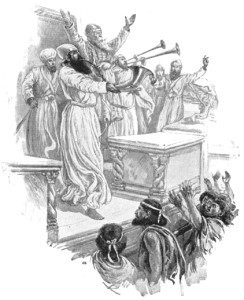 * Jubilee Year (p. 75) The Jubilee Year came every 49/50 years–the 7th sabbatical year (see sabbatical year). Like the sabbatical years, the land lay fallow in the Jubilee Year, but most uniquely, Jewish slaves were freed, and land was restored to its original owners. The book of Leviticus mandates observance of the Jubilee. Some scholars believe that these rules were originally part of the observance of every sabbatical year. Whenever the practice of the Jubilee Year actually began, it is clear that by Jesus’ time, Israel’s observance of it had been interrupted by a succession of foreign overlords. It is possible that the Jubilee would have fallen during the years of Jesus’ ministry, although it would not have been observed.
* Jubilee Year (p. 75) The Jubilee Year came every 49/50 years–the 7th sabbatical year (see sabbatical year). Like the sabbatical years, the land lay fallow in the Jubilee Year, but most uniquely, Jewish slaves were freed, and land was restored to its original owners. The book of Leviticus mandates observance of the Jubilee. Some scholars believe that these rules were originally part of the observance of every sabbatical year. Whenever the practice of the Jubilee Year actually began, it is clear that by Jesus’ time, Israel’s observance of it had been interrupted by a succession of foreign overlords. It is possible that the Jubilee would have fallen during the years of Jesus’ ministry, although it would not have been observed.
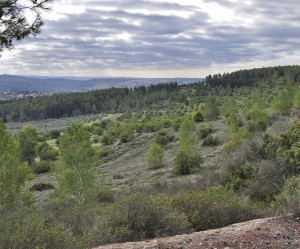 *Judea (p. 15) Judea was the name of the mountainous area west of the Jordan River reaching to the Mediterranean, south of Samaria, and north of Idumea. The name came originally from the tribe of Judah, which was granted much of the same area after the Exodus. In King David’s time (11th C BCE) Jerusalem was established as the capital of the Kingdom of Judah. The kingdom survived until its conquest by Babylon in 597 BCE, after which it was ruled by a variety of larger empires. In Jesus’ time it was a province of Rome.
*Judea (p. 15) Judea was the name of the mountainous area west of the Jordan River reaching to the Mediterranean, south of Samaria, and north of Idumea. The name came originally from the tribe of Judah, which was granted much of the same area after the Exodus. In King David’s time (11th C BCE) Jerusalem was established as the capital of the Kingdom of Judah. The kingdom survived until its conquest by Babylon in 597 BCE, after which it was ruled by a variety of larger empires. In Jesus’ time it was a province of Rome.
.
.





